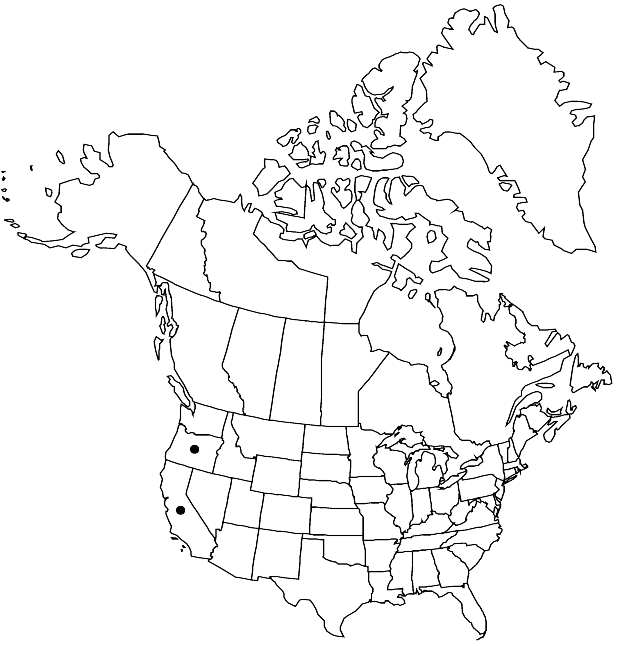Arabis modesta
Rhodora 43: 350. 1941.
Perennials; (caudex usually simple, rarely branched, covered with persistent petiolar remains); sparsely to densely pubescent, trichomes short-stalked, cruciform, or 3-rayed stellate, (0.3–0.5 mm). Stems simple or few from base (caudex), erect, usually unbranched, rarely branched (few) distally, 2.2–5.5 (–6.7) dm, (usually pubescent throughout, rarely subglabrate distally, trichomes stellate). Basal leaves: petiole 1–4 (–5) cm, (rarely minutely ciliate near base); blade oblanceolate to obovate, (0.8–) 2–4.5 (–6) cm × (4–) 10–20 (–25) mm, margins entire, repand, or dentate, (not ciliate), apex obtuse, surfaces pubescent, trichomes short-stalked, stellate. Cauline leaves (2–) 4–6 (–9); blade oblong or ovate, 1–3.5 (–4.5) cm × (3–) 6–10 (–20) mm, base not auriculate, margins entire, repand, or dentate, apex obtuse or acute, surfaces pubescent, trichomes short-stalked, stellate. Racemes simple, (dense). Fruiting pedicels ascending to divaricate, 7–18 (–25) mm. Flowers: sepals (purple), oblong, (4–) 5–6.5 (–8) × 1.5–2 mm, lateral pair saccate basally; petals purple, spatulate, (10–) 12–16 (–20) × 4–6 (–7) mm, apex rounded; filaments (4–) 5–8 mm; anthers narrowly oblong, 1.3–2 mm. Fruits suberect to divaricate, sometimes slightly curved, slightly torulose, (2.8–) 3.5–6 cm × 1.5–2 mm; valves each with prominent midvein extending to middle or full length; ovules 20–34 per ovary; style 0.5–1 (–1.5) mm. Seeds winged distally, oblong, 1.7–2.2 × 0.9–1.2 mm; wing 0.2–0.5 mm wide. 2n = 32.
Phenology: Flowering Mar–Apr(-May).
Habitat: Moist shaded banks, slopes, rocky canyon walls, talus, basaltic bluffs
Elevation: 150-500 m
Discussion
Arabis modesta, known only from Napa, Siskiyou, and Yolo counties (California), and Jackson and Josephine counties (Oregon), and the following four species form a well-defined group easily separated from the first nine species above by their large, purple petals. Arabis modesta is readily distinguished from other purple-flowered Arabis by having very fine, short-stalked cruciform and 3-rayed, instead of simple and 2-rayed, forked trichomes. Arabis blepharophylla has broadly winged, orbicular seeds, and the other purple-flowered species (A. aculeolata, A. mcdonaldiana, A. oregana) have oblong seeds that are not winged or narrowly winged distally. The lines separating these three species are not as well-defined as those of A. blepharophylla and A. modesta, and further studies are needed to resolve them. I prefer to maintain all five species of purple-flowered Arabis as distinct until thorough molecular and hybridization studies are conducted. In the absence of such studies, it is unwise to make any nomenclatural changes.
Selected References
None.
Lower Taxa
"elongated" is not a number."thick" is not a number."dm" is not declared as a valid unit of measurement for this property."dm" is not declared as a valid unit of measurement for this property.
